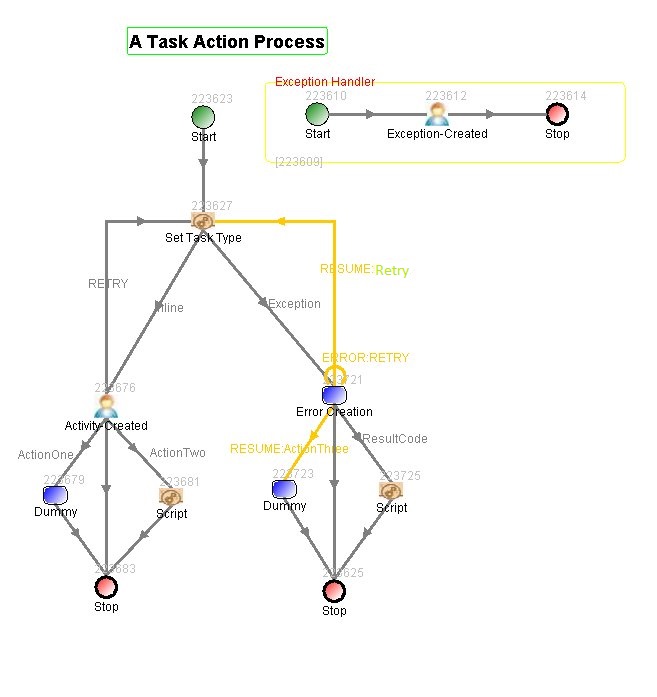| Attribute | Description |
|---|
| Task Name | The name displayed in MDW Hub. |
| Task Description | A more detail description about this task. |
| Category | Optional mechanism for grouping tasks. |
| Task SLA | Follow this link for information on task SLA. |
| Alert Interval | Alert interval when SLA is violated.
Follow this link for information on task SLA. |
| Variables | Variables to be displayed in the task detail page in the task manager. |
| Work groups | The user group(s) the task is to be placed in. |
| Auto-assign Strategy | Strategy to automatically assign tasks to a user in the specified user groups. |
| Notices | Follow this link for information on task notices. |
| Notice Groups | Follow this link for information on task notices. |
| Recipient Variable | Follow this link for information on task notices. |
| Action |
Outcome for In-Line
Task Activities |
Outcome for Exception Handler
Task Activities |
| End State |
|---|
| Activity Status |
Task Status |
Task State |
|
| Abort |
Process containing task activity is failed |
Parent process with errored activity is failed |
Failed |
Failed |
Closed |
| Assign |
Task instance is assigned to selected user |
Task instance is assigned to selected user |
Unchanged |
Assigned |
Open |
| Cancel |
Process null transition from task activity |
Process null transition from errored activity |
Cancelled |
Cancelled |
Closed |
| Claim |
Task instance is assigned to current user |
Task instance is assigned to current user |
Unchanged |
Assigned |
Open |
| Close |
No workflow outcome |
No workflow outcome |
Cancelled |
Cancelled |
Closed |
| Complete |
Process null transition from task activity |
Process null transition from errored activity |
Completed |
Completed |
Closed |
| Forward |
Task instance becomes selected type |
Task instance becomes selected type |
Unchanged |
Unchanged |
Open |
| Release |
Task instance becomes unassigned |
Task instance becomes unassigned |
Unchanged |
Open |
Open |
| Retry |
No default behavior |
Invoke main process errored activity again |
Cancelled |
Cancelled |
Closed |
| Work |
Task instance becomes editable for assigned user |
Task instance becomes editable for assigned user |
Unchanged |
In Progress |
Open |
| Custom Action |
Process custom transition from task activity |
Process custom transition from errored activity |
Completed |
Completed |
Closed |
